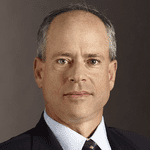
LIPA’s new program reinforces the growing CLEAN Movement
This is the perfect time to learn more about CLEAN programs and how they work, as they gain popularity around the country.
Following the adoption ofPalo Alto CLEANby the City of Palo Alto Utilities (CPAU) in March, momentum continues to grow for Clean Local Energy Accessible Now (CLEAN) Programs in the U.S.
Therecent announcementby New York’s Long Island Power Authority (LIPA) to bring 50 megawatts of clean local energy online by purchasing solar energy at 22 cents per kilowatt-hour for 20 years will bring CLEAN Programs from the West Coast to the East Coast.
Although CLEAN Programs (also known as feed-in tariffs) have been adopted by about a dozen cities, regions and states in the U.S. to date, this policy mechanism has been used widely around the world for years.
This is the perfect time tolearn more about CLEAN programsand how they work, as they continue to gain popularity around the country.

